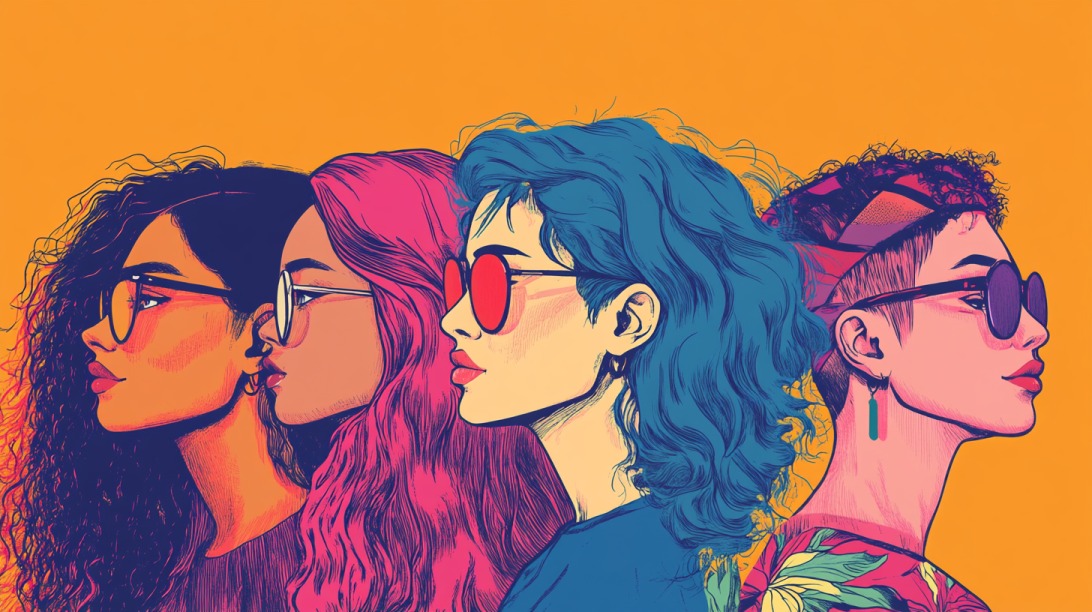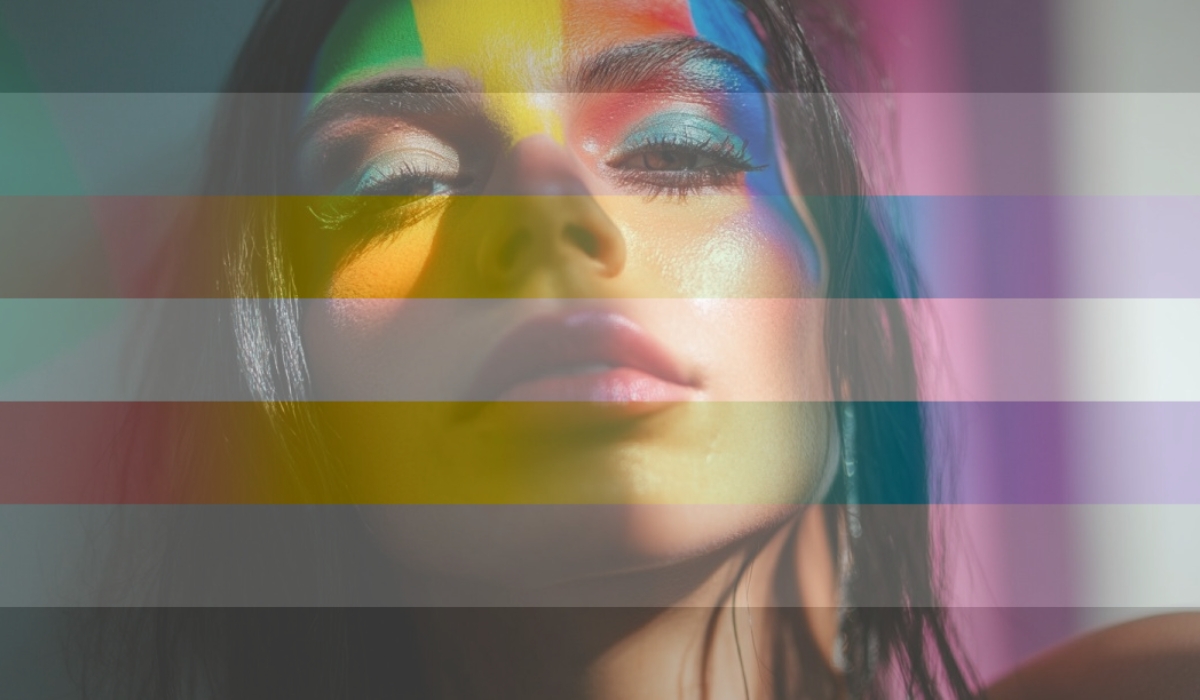Gender identity conversations have gained more public attention in recent years.
A broader acceptance of non-binary expressions has encouraged individuals to speak openly about their gender experiences.
The goal here is to foster respectful awareness and provide helpful knowledge about demiboy and demigirl identities.
What Does It Mean to Be a Demiboy?
@zoestoller Did you know this was a gender identity? 💙🌈 #learnontiktok #zoestoller #demiboy ♬ She Share Story (for Vlog) – 山口夕依
A demiboy is someone who identifies partially with masculinity or as a boy or man, but not entirely. That connection can be constant or fluid, strong or faint, depending on the individual.
Many people experience their gender in non-binary ways, and the demiboy label offers a space to express that partial link to masculinity. It doesn’t require full alignment with traditional male identity or presentation.
People assigned any gender at birth, AFAB (assigned female at birth), AMAB (assigned male at birth), or AXAB (assigned intersex or another designation) can identify as a demiboy.
Gender identity does not rely on biology but on internal experience and self-recognition.
For some, identifying as a demiboy helps explain feelings that don’t match the rigid expectations of being “fully male” or “not male at all.”
Several terms are commonly used by those who identify in this way.
- Demiman – Often used to describe someone who leans toward masculine identity, with room for other gender expressions.
- Demimale – Another term implying a partial male identity, often used in online spaces and personal introductions.
- Demiguy – Frequently chosen by younger people, with a casual tone that fits daily conversations.
- Demidude – A laid-back, friendly label that can be empowering in informal circles.
Each person might prefer one term over another, depending on what feels most affirming. Labels help communicate how one sees oneself, but they don’t define every aspect of someone’s gender identity.
What Does It Mean to Be a Demigirl?
A demigirl is someone who partially identifies with femininity or as a girl or woman. That identification might be strong in some aspects and minimal in others, and it does not rely on any specific assignment at birth.
Individuals who are AFAB (assigned female at birth), AMAB (assigned male at birth), or AXAB (assigned intersex or another assignment) can identify with the demigirl experience.
Gender identity is personal, and for many, the demigirl label provides language that fits where binary terms do not.
Alternate terms often help people further refine or personalize how they express themselves.
- Demiwoman – partially aligned with womanhood, often used for formal self-identification
- Demifemale – typically used to emphasize a partial connection to traditionally female gender roles or traits
- Demigal – a casual or friendly variant, especially common in younger communities
- Demidudette – often chosen to reflect a balance of femininity with other non-binary or playful expressions
A demigirl may feel deeply connected to femininity in certain areas, such as clothing, communication style, or emotional energy but might not identify entirely with being a girl or woman.
Others may reject traditional gender roles while still recognizing some consistent alignment with femininity. There is no set way to “look” or behave as a demigirl.
- Use of she/they or they/she pronouns
- Presentation that blends feminine and neutral aesthetics
- Comfort in spaces that acknowledge fluid or partial gender identities
- Selective engagement with feminine cultural expectations (e.g., embracing some, rejecting others)
Relationship with Other Gender Identities

Demiboy and demigirl identities often align with the transgender umbrella because they reflect a gender experience that differs from what was assigned at birth.
However, not everyone who identifies as demiboy or demigirl considers themselves entirely transgender. For some, the experience feels distinct and personal rather than fitting neatly into larger transgender categories. That is entirely valid.
Many individuals also find alignment with other gender identities. It’s helpful to explore how demiboy and demigirl identities intersect with adjacent gender expressions.
- Non-binary: An umbrella identity for those who don’t identify exclusively as male or female. Demiboys and demigirls may identify partially within this scope.
- Genderqueer: Often used to express fluid or unconventional gender identities. Those who use this label may reject traditional gender expectations, similar to how demiboys and demigirls challenge binary frameworks.
- Genderfluid: Refers to those whose gender identity shifts over time. A person might feel more demiboy-aligned on some days and more agender or feminine on others.
@zoestoller Know any other genderfluid humans who should be recognized? Shout them out in the comments! 🥰🌈 #genderfluidtiktoker #zoestoller #genderfluidity ♬ Anywhere With You – Maggie Rogers
Identities like demiboy and demigirl can offer a sense of grounding for individuals navigating dysphoria. Many people feel discomfort when expected to perform traditional gender roles that don’t resonate with them.
Flag and Symbolism
The demiboy flag includes shades of grey to represent partial identification, blue to symbolize masculinity, and white for non-binary identities. Together, these colors speak to the balance between masculinity and another gendered or agender experience.
The demigirl flag uses greys as well for partial identity, pink for femininity, and white to represent agender or non-binary elements. Both flags create a visual representation of layered gender experience.
These flags originated within the Brazilian non-binary community, who aimed to design symbols that reflect more nuanced gender identities. Over time, they’ve become powerful emblems used during pride events, on social media, and in personal storytelling.

Respecting Demigender Identities
Respecting demigender identities starts with honoring how someone names and expresses themselves. Pronouns are a central part of identity. A demiboy may use he/they pronouns, while a demigirl might go by she/they, they/she, or a completely different combination.
Asking about pronouns shows respect. Using the correct ones consistently reflects care, attention, and trustworthiness. Never assume based on appearance, tone of voice, or name, just ask.
Misconceptions about gender and sexuality often lead to damaging assumptions. One common mistake involves linking gender identity with sexual orientation. These two concepts describe completely different things. Demiboy or demigirl refers to gender.
It does not indicate who someone is romantically or sexually attracted to. People must recognize and respect this distinction to avoid confusion and reinforce inclusive behavior.
Several key actions help support those who identify as demiboy or demigirl. Each one plays a role in creating an affirming environment.
- Ask and use correct pronouns: Respect what someone shares, even if it changes over time.
- Avoid assumptions: Do not guess someone’s identity, sexuality, or experiences.
- Use affirming language: Avoid terms that reduce or invalidate non-binary identities.
- Correct others when necessary: Speak up if someone is misgendered or mocked.
- Apologize and adjust: Mistakes happen, own them, fix them, and move on without making it about yourself.
- Offer space and support: Sometimes listening means more than giving advice.
Respect doesn’t require full agreement with someone’s identity. It requires basic decency. Even those unfamiliar with demigender experiences can show support through thoughtful, intentional words and actions.
Final Thoughts
Continued learning plays a vital role in building inclusive communities. Language evolves, experiences vary, and empathy makes a significant difference in how individuals feel accepted.
Organizations such as the Trans Youth Equality Foundation, GLSEN, and other LGBTQ+ advocacy groups provide educational material and support services. Seeking out these resources helps deepen awareness.
Open dialogue creates safer spaces for everyone. Respecting demiboy and demigirl identities strengthens the social fabric by honoring human variety in self-expression and experience.

